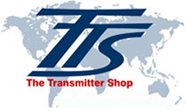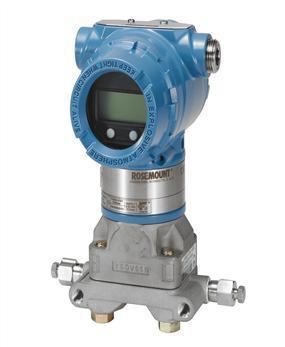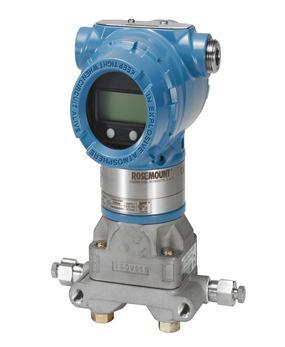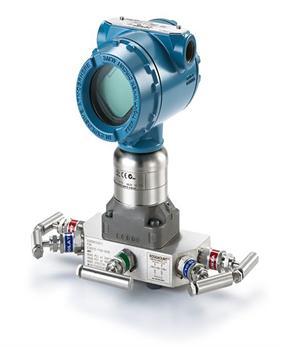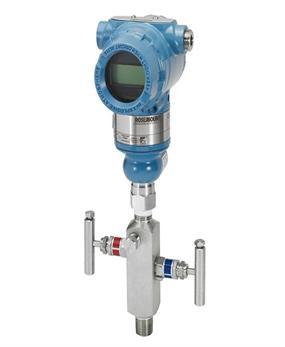BLOG
Rosemount 3051S vs 3051C Transmitter – What is Your Choice?
Brian Craig
July 29, 2019
The Rosemount 3051 transmitters are known for their accuracy, user-friendly designs, and reliability. These transmitters are widely used across various process industries that depend on accurate level, pressure, and flow measurements for functioning. The 3051 pressure transmitter comprises several transmitters including 3051S Series Smart Pressure Transmitters, 3051C Coplanar Pressure Transmitters, 3051TG Gauge Pressure Transmitters, and so on. Among these 3051S and 3051C are the most popular variants. These variants have peculiar properties and thus are preferred for specific applications. Read the post to know the typical advantages offered by each of these variants.
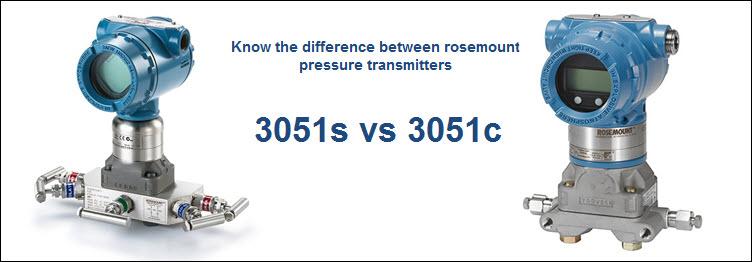
A Brief Outlook of Rosemount 3051C Pressure Transmitters
Rosemount 3051C coplanar pressure transmitters have set benchmark standards for pressure measurement. These pressure transmitters are equipped with a flexible coplanar platform, and offer a host of other features. The following beneficial features of these transmitters have contributed to their popularity:
- Quick Installations: These pressure transmitters can be configured for a flow, level, and pressure applications. Offered in easy-to-install designs, these pressure transmitters help reduce installation efforts and costs associated with other standard pressure transmitter installations. According to various studies, they enable users to make about 60% savings over regular wired pressure transmitters.
- Improved Accuracy: Under normal operating conditions, this transmitter assures improved reference accuracy of +/- 0.04% with a span down to a 10:1 turndown. This improved accuracy enables drive the total performance to +/- 0.12% of span.
- Increases Work Productivity and Reduces Maintenance Costs: Like other Rosemount 3051 transmitter family, 3051C transmitters are also equipped with advanced features such as power advisory diagnostics, and local operator interface (LOI). The LOI interface makes commissioning easy, and power advisory diagnostics help in quicker detection of integrity issues occurring in an electrical loop. Both these features help boost work productivity and reduce maintenance efforts, and associated costs.
- Seamless Integration with Accessories: The Rosemount 3051C pressure transmitter takes advantage of the patented coplanar technology, which assures scalability and enables seamless integration with various accessories.
- Advanced Capabilities: The 3051C pressure transmitters are equipped with advanced HART capabilities. They can be availed with HART 5 & HART 7 capabilities. HART 7 is an advanced protocol mainly designed for wireless systems, and is also suited for wired systems. These advanced HART protocols make the transmitters responsive to current and future capabilities.
Why are Rosemount 3051S Smart Series Pressure Transmitters Popular?
The 3051S Smart Series pressure transmitters have become the first choice for pressure measurement owing to the following advantages they offer:
- Gain Better Control Over Process: The pressure transmitters feature advanced diagnostics, which help identify abnormal process conditions as well as electrical loop issues. In addition to this, the remote display enables users to access device and process information easily.
- Improved Energy Efficiency: The pressure transmitters feature hermetic SST SuperModuleTM platform that resists line pressure and overpressure, thereby ensuring 0.025% accuracy. The transmitter offers a rangedown of 200:1 that assures reliability as well as application flexibility. When used with flowmeters, these pressure transmitters help track the use of natural gas and steam effectively. If used with annubar flowmeters, these transmitters help reduce the pressure loss by at least 96%.
- Assure Safety of People, Process, and Surroundings: Advanced diagnostics enable to identify errors before they escalate. Remote Display and Interface enables limit user exposure to dangerous heights and hazardous areas.
3051S vs 3051C – What Works for You?
With each of these transmitters offering several advantages, it is quite obvious to get confused about their choice. Here are the tips that will ease your confusions.
- If accuracy and turndown ratio is your concern it is better to choose 3051S.
- If money is your concern, then it is better to choose 3051C. In short, it is suited for applications, where accuracy and turndown ratio differences may not matter beyond a limit.
Finally, the choice will depend on your accuracy requirements among various other factors. Whatever be the reason for the selection, it is important that you source these transmitters from a reliable source like TTS. The company sells refurbished and company-tested transmitters.
Related Posts
Exploring Density and Viscosity Measurement in Industrial Processes
Pressure Monitoring in Pump Systems: A Comprehensive Guide
Common Challenges in Air Flow Measurement and How to Overcome Them
Monitoring and Controlling Energy Production in Power Plants
Understanding the Impact of Pressure Fluctuations on Drying Performance
Understanding Pressure Ranges and Units for Fluid System Monitoring
The Benefits and Challenges of HVAC System Balancing
An Ultimate Selection Guide for Flow Transmitters
Procedure to Calculate Accuracy of Pressure Transmitter Discussed
Pressure Transmitters vs. Pressure Transducers: Learn the Differential Characteristics
Multivariable Transmitter: What Is It and How Does It Work?
How Do You Test for 4 to 20mA Signal in a Pressure Transmitter?
Temperature Transmitter: How to Select The Efficient One for Your Application?
Flow Meter vs Flow Transmitter: Know the Difference
Absolute and Gauge Pressure Transmitters - Overview and Working Principle
HART Communication Protocol: Overview, Working Principle, Benefits in Industrial Automation
What is Absolute Pressure Transmitter & how does it work?
How Do You Calibrate A Flow Transmitter?
Remote Seals: Significance, Working Principle & Applications
How to Select Pressure Transmitter for Your Application?
How to Choose Diaphragm Seals for Your Application?
Difference in Conventional Transmitters and Smart Transmitters
What Are Diaphragm Seals and Their Types?
Rosemount 2088 Vs Rosemount 3051 – A Few Points of Differences Discussed
Impact of Shock and Vibration on Pressure Transducer
Safety Tips for Differential Pressure Transmitter Operation
Factors to Consider When Choosing a Pressure Transmitter Manifold
Tips to Improve the Performance of Pressure Sensors
Important Calibration Tips for Pressure Sensors
5 Most Popular Pressure Transmitter Technologies
Factors of Consideration When Choosing Pressure Transmitters
Tips to Augment the Performance and Service Life of Pressure Transmitter
Factors To Be Considered While Differentiating $40 and $400 Pressure Transmitters
An Unconventional Guide to Selecting the Right Pressure Sensor
3 Major Pressure Transmitter Technologies That Made the Device Popular
The Features and Benefits of Rosemount 1199 Direct Mount Transmitters
What are the Steps Involved in Calibrating Pressure Gauge?
All Important Questions on Reconditioned Transmitters Answered
Is Remanufactured Transmitter a Better Option than a New One?
Differential Pressure Transmitters: How Do They Help in Flow Measurements?
3 Whats that Explain How Often You Should Calibrate Pressure Transducer
Guidelines for Troubleshooting Pressure Transducers
Learn How to Calibrate a Pressure Transmitter – II
Learn How to Calibrate a Pressure Transmitter
Know Three Interesting Uses of Pressure Transmitters
Pressure Monitoring in Pump Systems: A Comprehensive Guide
Common Challenges in Air Flow Measurement and How to Overcome Them
Monitoring and Controlling Energy Production in Power Plants
Understanding the Impact of Pressure Fluctuations on Drying Performance
Understanding Pressure Ranges and Units for Fluid System Monitoring
The Benefits and Challenges of HVAC System Balancing
An Ultimate Selection Guide for Flow Transmitters
Procedure to Calculate Accuracy of Pressure Transmitter Discussed
Pressure Transmitters vs. Pressure Transducers: Learn the Differential Characteristics
Multivariable Transmitter: What Is It and How Does It Work?
How Do You Test for 4 to 20mA Signal in a Pressure Transmitter?
Temperature Transmitter: How to Select The Efficient One for Your Application?
Flow Meter vs Flow Transmitter: Know the Difference
Absolute and Gauge Pressure Transmitters - Overview and Working Principle
HART Communication Protocol: Overview, Working Principle, Benefits in Industrial Automation
What is Absolute Pressure Transmitter & how does it work?
How Do You Calibrate A Flow Transmitter?
Remote Seals: Significance, Working Principle & Applications
How to Select Pressure Transmitter for Your Application?
How to Choose Diaphragm Seals for Your Application?
Difference in Conventional Transmitters and Smart Transmitters
What Are Diaphragm Seals and Their Types?
Rosemount 2088 Vs Rosemount 3051 – A Few Points of Differences Discussed
Impact of Shock and Vibration on Pressure Transducer
Safety Tips for Differential Pressure Transmitter Operation
Factors to Consider When Choosing a Pressure Transmitter Manifold
Tips to Improve the Performance of Pressure Sensors
Important Calibration Tips for Pressure Sensors
5 Most Popular Pressure Transmitter Technologies
Factors of Consideration When Choosing Pressure Transmitters
Tips to Augment the Performance and Service Life of Pressure Transmitter
Factors To Be Considered While Differentiating $40 and $400 Pressure Transmitters
An Unconventional Guide to Selecting the Right Pressure Sensor
3 Major Pressure Transmitter Technologies That Made the Device Popular
The Features and Benefits of Rosemount 1199 Direct Mount Transmitters
What are the Steps Involved in Calibrating Pressure Gauge?
All Important Questions on Reconditioned Transmitters Answered
Is Remanufactured Transmitter a Better Option than a New One?
Differential Pressure Transmitters: How Do They Help in Flow Measurements?
3 Whats that Explain How Often You Should Calibrate Pressure Transducer
Guidelines for Troubleshooting Pressure Transducers
Learn How to Calibrate a Pressure Transmitter – II
Learn How to Calibrate a Pressure Transmitter
Know Three Interesting Uses of Pressure Transmitters
